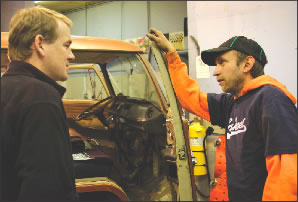By Jan MacKell
Foreword by Thomas J. Noel
Published in 2009 by University Press of New Mexico
ISBN 978-0-8263-4610-0
Reviewed by Virginia McConnell Simmons
As Frank Gifford once said about the sport of pro football, “There are no winners, only survivors.” As this new book by Jan MacKell shows, there were few winners and survivors in the sport of prostitution, but Central Colorado can claim a couple of well-known survivors, like Cockeyed Liz Spurgeon (or Spurgen) in Buena Vista and Laura Evans (or Evens) in Salida, who managed to survive for many years. Perhaps their survival was helped by the healthful climate.
Red Light Women of the Rocky Mountains is MacKell’s second book about the oldest profession, her first foray having been limited to Colorado. In the preface to this new volume, MacKell enthuses about having had “a heck of a lot of fun” while she was researching prostitution throughout the Mountain States. Few who read it, however, will conclude that this profession was such a heck of a lot of fun for its practitioners.
Using interviews, popular secondary sources, census records, anecdotes old and new, newspaper accounts about crimes and arrests, and reports of tawdry and tragic endings, MacKell has produced a big book. It opens with a chapter discussing topics such as prostitution among Native Americans, how and where the trade was conducted, exploitation of young Chinese girls, methods of birth control, and the prevalence of venereal disease. Scattered elsewhere in the book, one will come upon melancholy information about working hours, rates charged by women according to their race and ethnicity, hygiene, alcohol and drug addiction, suicide, violence, fines, and taxes.
Most of this large tome, however, is about the thousands of madams and working girls themselves in countless places where they plied their trade. In her indefatigable zeal through seven states, MacKell appears to have unearthed not only all the prostitutes but most of the parlor houses, back alleys, and hog ranches as well. In Colorado, she reports on Salida, Leadville, and other towns and villages of Central Colorado along with the rest of the state to the north, east, south, and west, while the spotlight is stolen by the bordellos of Cripple Creek, where MacKell is director of the local museum.
This big volume also has long digressions here and there about subjects like the celebrities of Prescott and Tombstone, Calamity Jane’s alcoholic career, New Mexico’s Silver City, the Stockade in Salt Lake City, and every known argument, it seems, about the identity and activities of Etta Place, before, during, and after the Wild Bunch.
Buildings and practitioners throughout the Mountain West are shown in 81 nicely reproduced images. Among them are the cribs, parlor houses, even Arbourville’s saloon/cat house, and Laura Evans’s ornate bedroom with its many bear skins (no pun intended). Photos include Nose Kate’s proboscis, Josie Marcus’s sheer wrap at Fly’s studio, Denver’s famous Jennie Rogers and Mattie Silks, and various other portraits that attest to the advantages of youth over age.
Many readers may enjoy the author’s informal writing style, but others will deplore her carelessness regarding historical and geographical accuracy. When she steps outside the narrow confines of the demimonde (a polite term for mistress), she makes errors that are hard to ignore. For instance, to mention only five of the numerous gaffes, the Centennial State was not created in 1874, Bent’s Fort was not built near Greenhorn nor in 1849, the United States Army did not march into Santa Fe in 1841, and Fort Marcy could not have been both northeast of Santa Fe’s plaza (which it was) and west of Albuquerque’s Old Town Plaza (which it wasn’t) — in contiguous paragraphs no less. What were the author and the editors at UNM Press thinking?
Nevertheless, even if Red Light Women is not a winner, it probably will be a survivor, for it offers a vast amount of information about the seamy side of the West, which is too often ignored in history and romanticized in fiction.
Reviewer and author Virginia McConnell Simmons still wonders about the truth of the Silverheels legend that was repeated in her own book about South Park.
